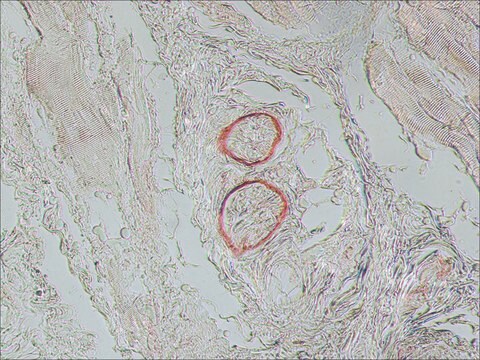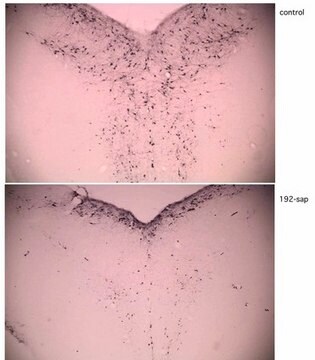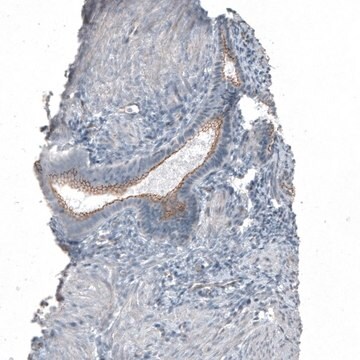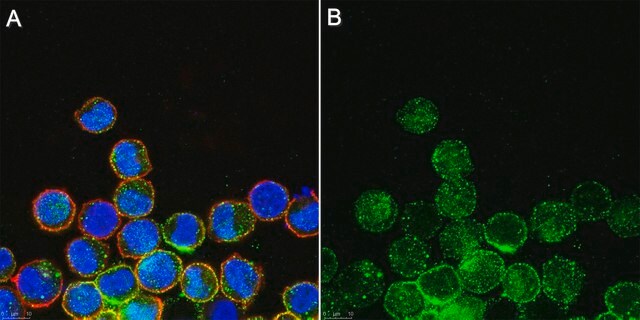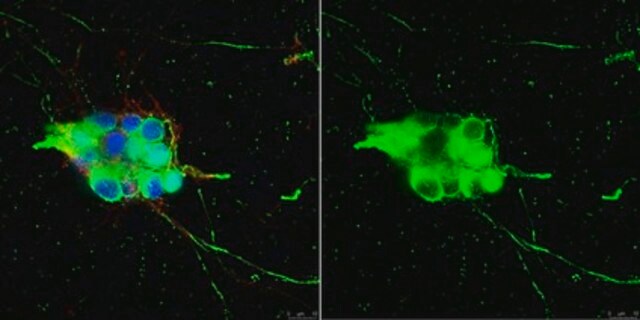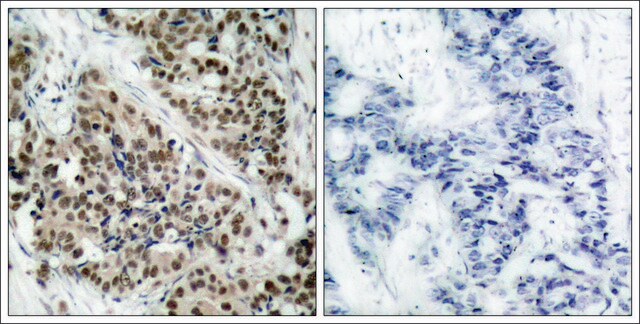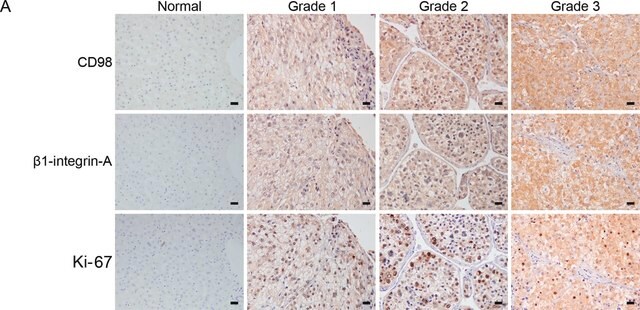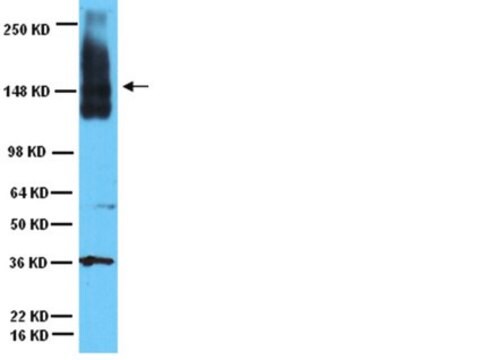MAB390
Anti-p75 LNGFR Antibody, Saporin conjugated, clone 192
clone 192, Chemicon®, from mouse
Synonym(s):
CD271 antigen, Low affinity neurotrophin receptor p75NTR, Low-affinity nerve growth factor receptor, NGF receptor, low affinity nerve growth factor receptor, nerve growth factor receptor, nerve growth factor receptor (TNFR superfamily, member 16), p75 IC
About This Item
Recommended Products
biological source
mouse
Quality Level
conjugate
saporin
antibody form
purified immunoglobulin
antibody product type
primary antibodies
clone
192, monoclonal
species reactivity
rat
should not react with
human, mouse
packaging
antibody small pack of 25 μg
manufacturer/tradename
Chemicon®
technique(s)
immunocytochemistry: suitable
immunohistochemistry: suitable (paraffin)
isotype
IgG1
NCBI accession no.
UniProt accession no.
shipped in
wet ice
target post-translational modification
unmodified
Gene Information
human ... NGFR(4804)
General description
Specificity
Immunogen
Application
A previous lot of this antibody was used in IH(P).
Immunocytochemistry:
A previous lot of this antibody was used in IC.
Optimal working dilutions must be determined by end user.
Neuroscience
Neurodegenerative Diseases
Neurochemistry & Neurotrophins
Physical form
Storage and Stability
Analysis Note
Brain tissue
Other Notes
Legal Information
Disclaimer
Not finding the right product?
Try our Product Selector Tool.
Storage Class Code
12 - Non Combustible Liquids
WGK
WGK 2
Flash Point(F)
Not applicable
Flash Point(C)
Not applicable
Certificates of Analysis (COA)
Search for Certificates of Analysis (COA) by entering the products Lot/Batch Number. Lot and Batch Numbers can be found on a product’s label following the words ‘Lot’ or ‘Batch’.
Already Own This Product?
Find documentation for the products that you have recently purchased in the Document Library.
Our team of scientists has experience in all areas of research including Life Science, Material Science, Chemical Synthesis, Chromatography, Analytical and many others.
Contact Technical Service
